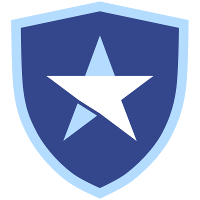seaborn
Altair
| seaborn | Altair | |
|---|---|---|
| 77 | 43 | |
| 11,969 | 8,946 | |
| - | 1.1% | |
| 8.4 | 9.0 | |
| 15 days ago | 2 days ago | |
| Python | Python | |
| BSD 3-clause "New" or "Revised" License | BSD 3-clause "New" or "Revised" License |
Stars - the number of stars that a project has on GitHub. Growth - month over month growth in stars.
Activity is a relative number indicating how actively a project is being developed. Recent commits have higher weight than older ones.
For example, an activity of 9.0 indicates that a project is amongst the top 10% of the most actively developed projects that we are tracking.
seaborn
- "No" is not an actionable error message
-
Apache Superset
If you are doing data analysis I don't think any of the 3 pieces of software you mentioned are going to be that helpful.
I see these products as tools for data visualization and reporting i.e. presenting prepared datasets to users in a visually appealing way. They aren't as well suited for serious analytics.
I can't comment on Superset or Tableau but I am familiar with Power BI (it has been rolled out across my org), the type of statistics you can do with it are fairly rudimentary. If you need to do any thing beyond summarizing (counts, averages, min, max etc). It is not particularly easy.
For data analysis I use SAS or R. This software allows you do things like multivariate regression, timeseries forecasting, PCA, Cluster analysis etc. There is also plotting capability.
Both these products are kind of old school, I've been using them since early 2000's, the "new school" seems to be Python. Pretty much all the recent data science people in my organization use Python. Particularly Pandas and libraries like Seaborn (https://seaborn.pydata.org/).
The "power" users of Power BI in my organization tend to be finance/HR people for use cases like drill down into cost figures or Interactively presenting KPI's and other headline figures to management things like that.
-
Seaborn bug responsible for finding of declining disruptiveness in science
It's referring to the seaborn library (https://seaborn.pydata.org/), a Python library for data visualization (built on top of matplotlib).
-
Why Pandas feels clunky when coming from R
While it’s not perfect and it’s not ggplot2, Seaborn is definitely a big improvement over bare matplotlib. You can still use matplotlib to modify the plots it spits out if you want to but the defaults are pretty good most of the time.
https://seaborn.pydata.org/
-
Releasing The Force Of Machine Learning: A Novice’s Guide 😃
Seaborn: A statistical data visualization library based on Matplotlib, enhancing the aesthetics and visual appeal of statistical graphics.
-
Seven Python Projects to Elevate Your Coding Skills
Matplotlib Seaborn Example data sets
-
Mastering Matplotlib: A Step-by-Step Tutorial for Beginners
Seaborn - Statistical data visualization using Matplotlib.
-
Top 10 growing data visualization libraries in Python in 2023
Github: https://github.com/mwaskom/seaborn
-
Best Portfolio Projects for Data Science
Seaborn Documentation
-
[OC] Nationwide Public Transit Ridership is down 30% from pre-lockdown levels; San Francisco's BART ridership is down almost 70%
You've done a great job presenting this. Maybe you already know, but seaborne is an extension of matplotlib that makes it pretty easy to "beautify" matplotlib charts
Altair
-
Ask HN: What's the best charting library for customer-facing dashboards?
I like Vega-Lite: https://vega.github.io/vega-lite/
It’s built by folks from the same lab as D3, but designed as “a higher-level visual specification language on top of D3” [https://vega.github.io/vega/about/vega-and-d3/]
My favorite way to prototype a dashboard is to use Streamlit to lay things out and serve it and then use Altair [https://altair-viz.github.io/] to generate the Vega-Lite plots in Python. Then if you need to move to something besides Python to productionize, you can produce the same Vega-Lite definitions using the framework of your choice.
- FLaNK AI Weekly 18 March 2024
- FLaNK AI for 11 March 2024
-
Vega-Altair: Declarative Visualization in Python
Feel free to open an issue to let us know which parts of the documentation you find obscure and if you have suggestions for how to improve them. We did a larger overhaul a few months back and are always open to feedback on how to improve it further! https://altair-viz.github.io/
(disclaimer: I'm a co-maintainer of Altair)
-
Gnuplotlib: Non-Painful Plotting for NumPy
Vega-Altair is pretty great as well. It uses a grammar of graphics that’s slightly different from ggplot, but has most of the same advantages.
https://altair-viz.github.io/
-
Mastering Matplotlib: A Step-by-Step Tutorial for Beginners
Altair - Declarative statistical visualization library for Python.
-
Top 10 growing data visualization libraries in Python in 2023
Github: Altair
- What python library you are using for interactive visualisation?(other than plotly)
- Libs para gráficos
-
If you had to pick a library from another language (Rust, JS, etc.) that isn’t currently available in Python and have it instantly converted into Python for you to use, what would it be?
Yeah, that's one of the main reasons I like altair. It has 10M downloads per month and the newest Git update is from two days ago.
What are some alternatives?
bokeh - Interactive Data Visualization in the browser, from Python
plotly - The interactive graphing library for Python :sparkles: This project now includes Plotly Express!
ggplot - ggplot port for python
plotnine - A Grammar of Graphics for Python
matplotlib - matplotlib: plotting with Python
PyQtGraph - Fast data visualization and GUI tools for scientific / engineering applications
folium - Python Data. Leaflet.js Maps.

